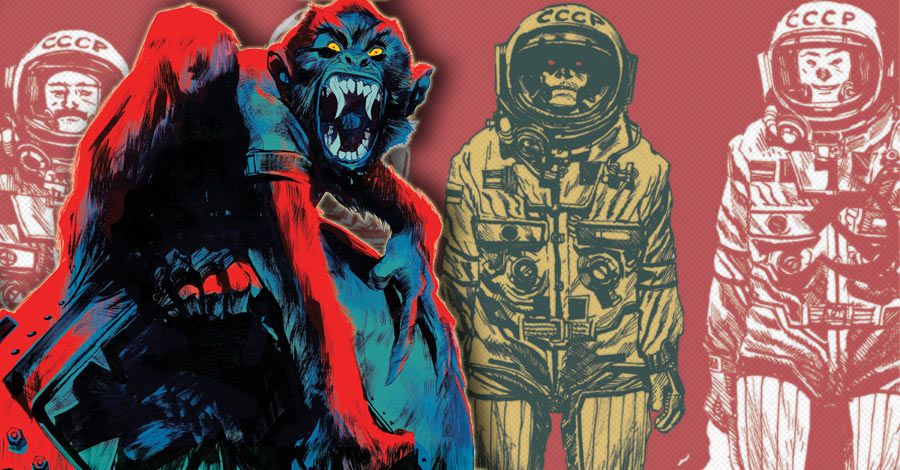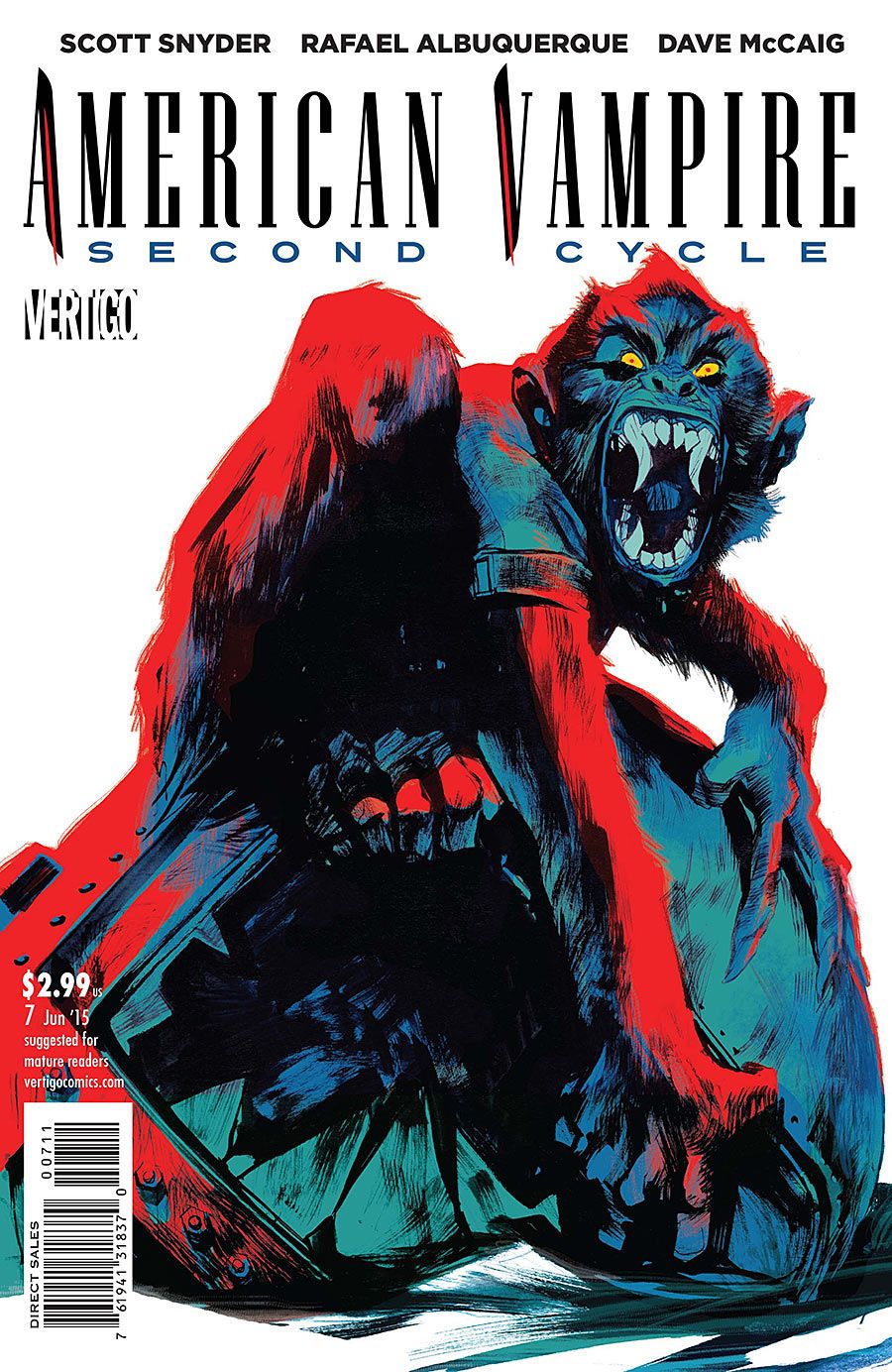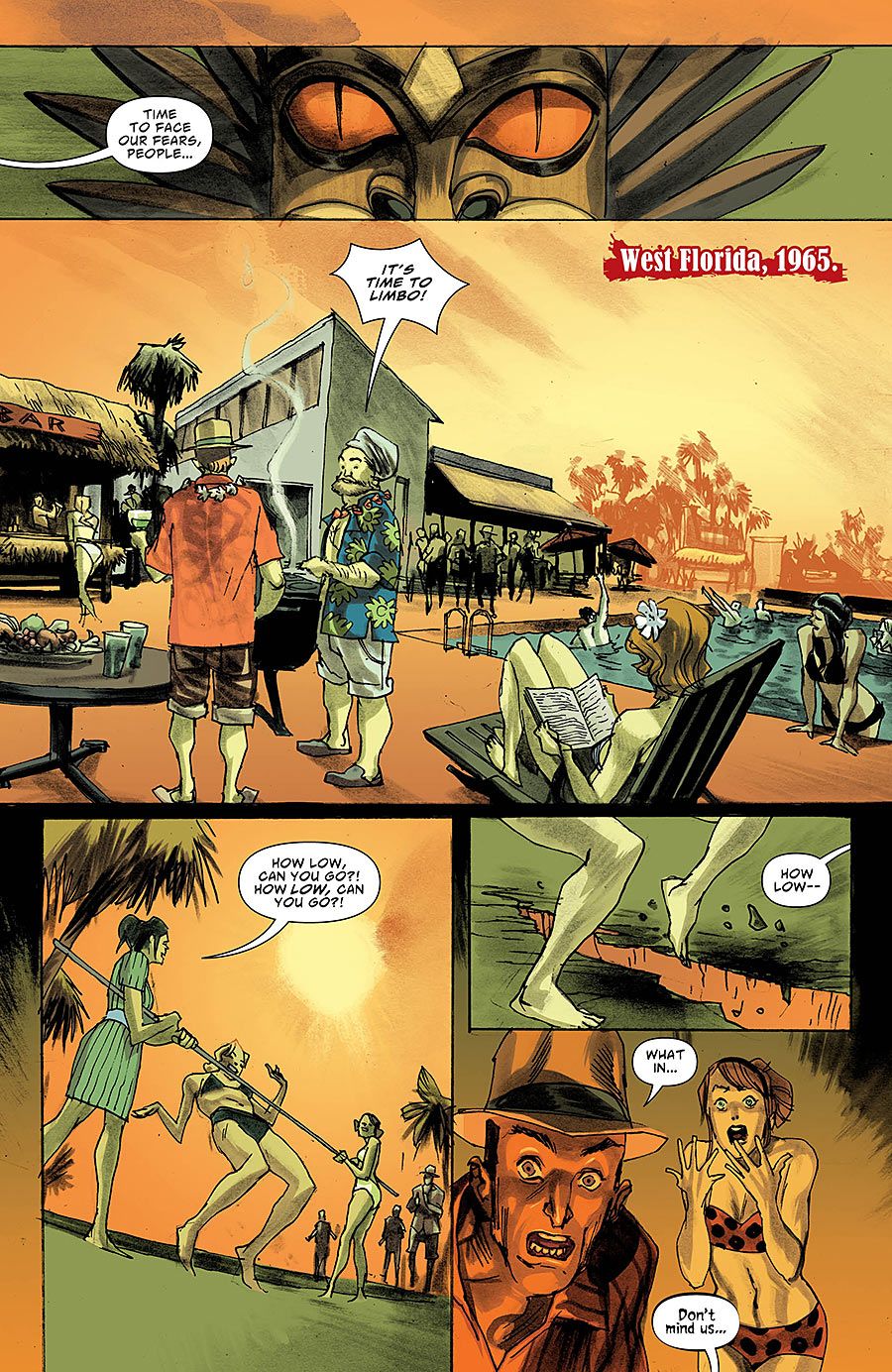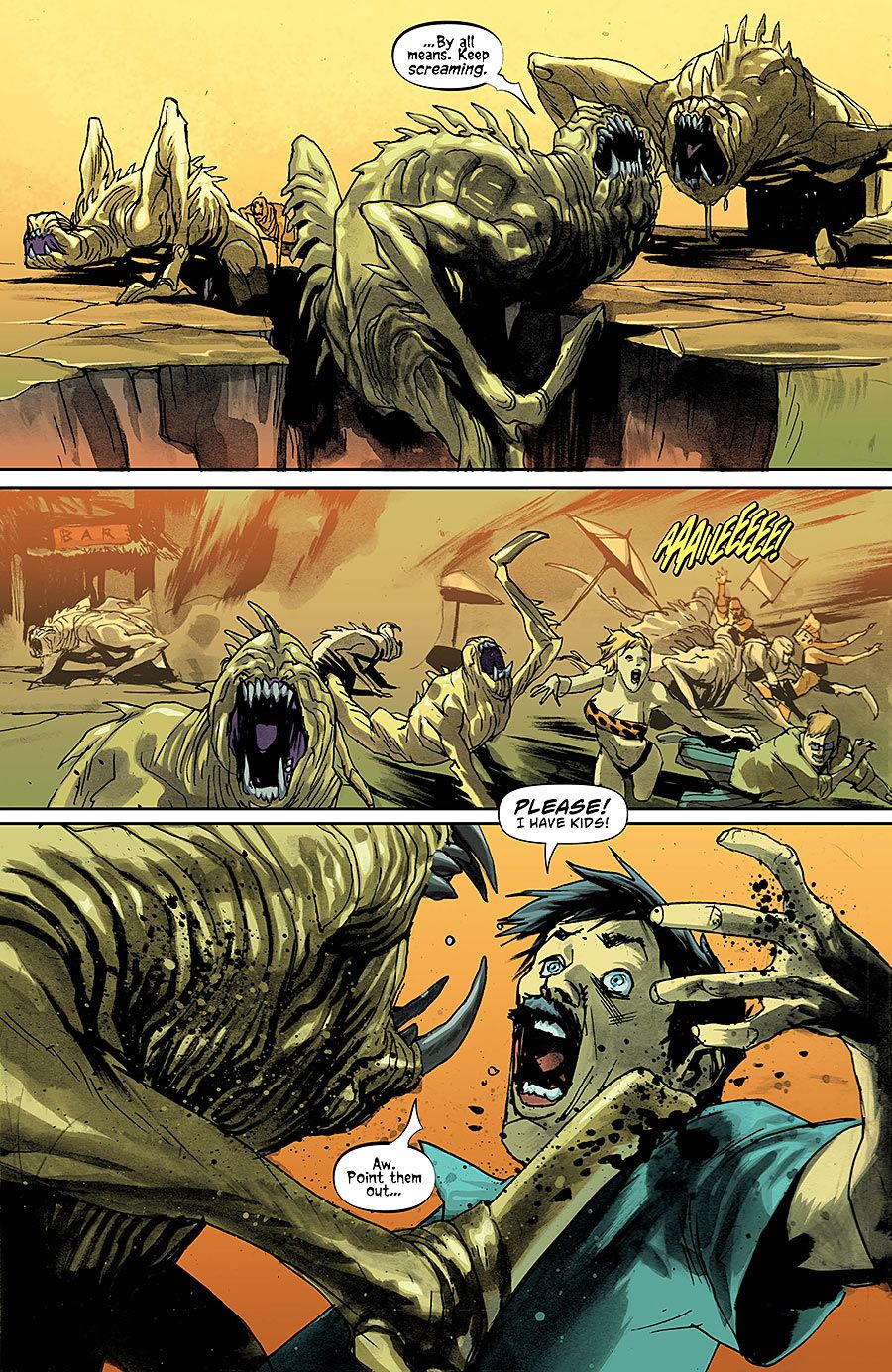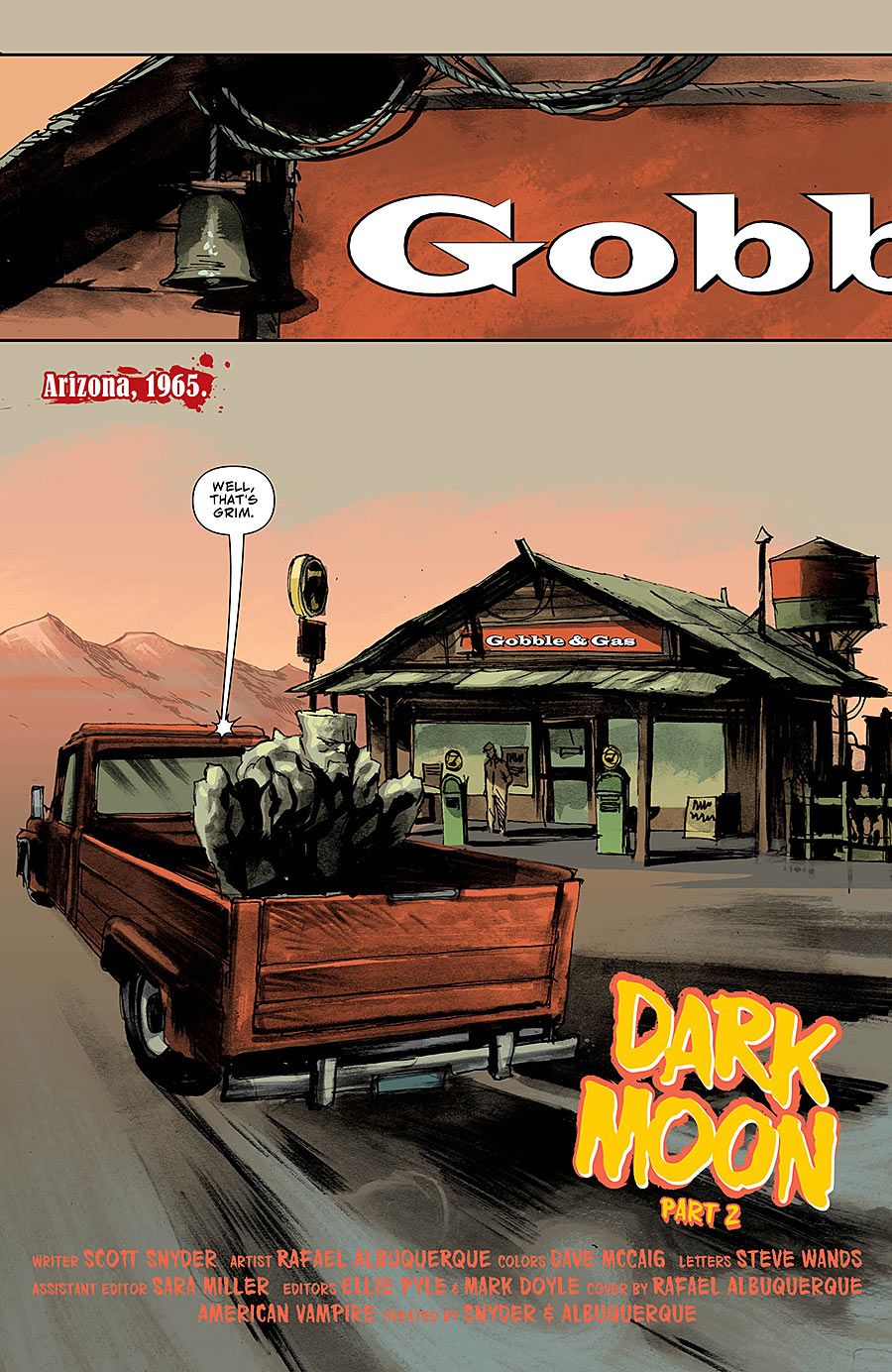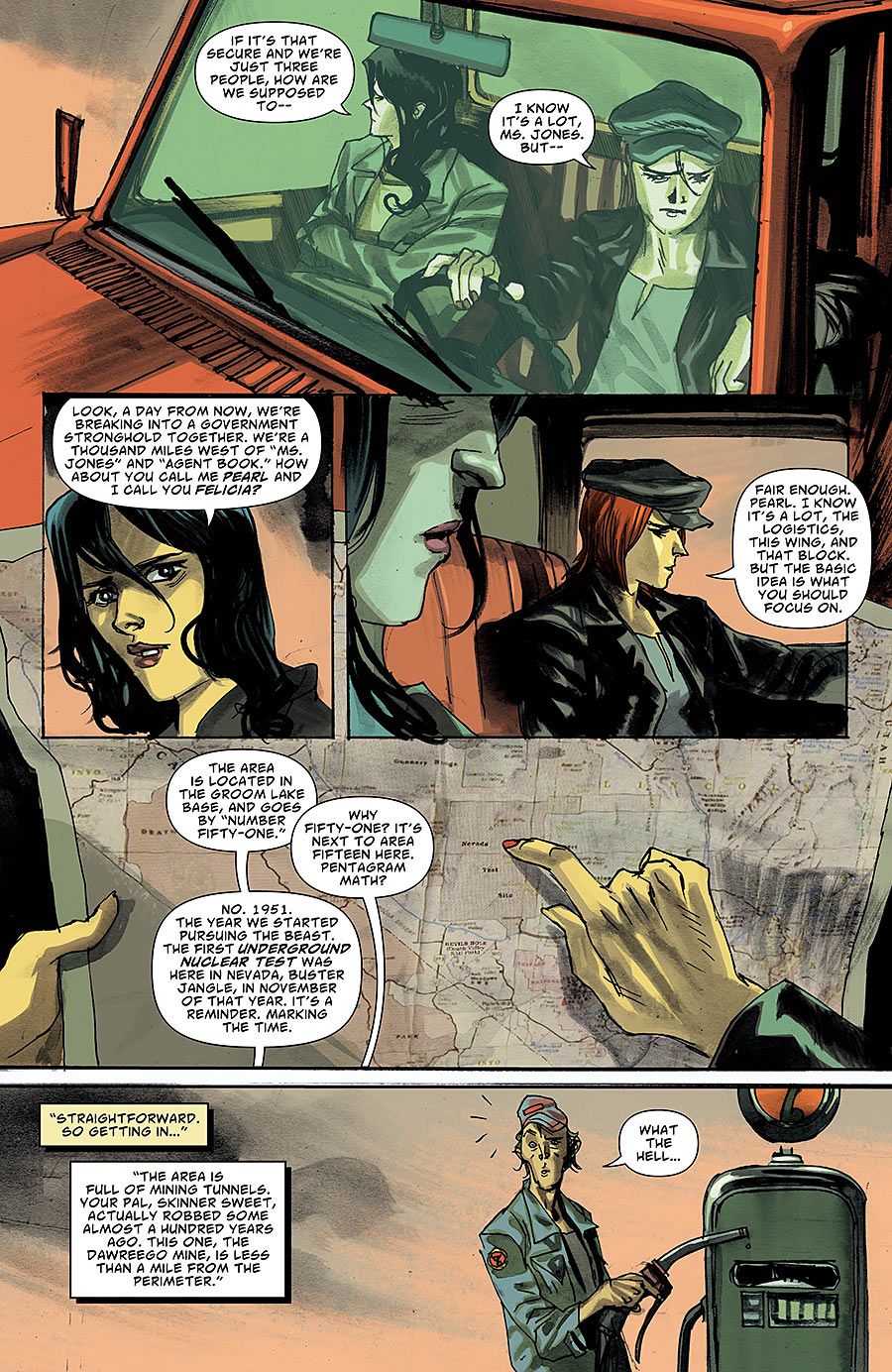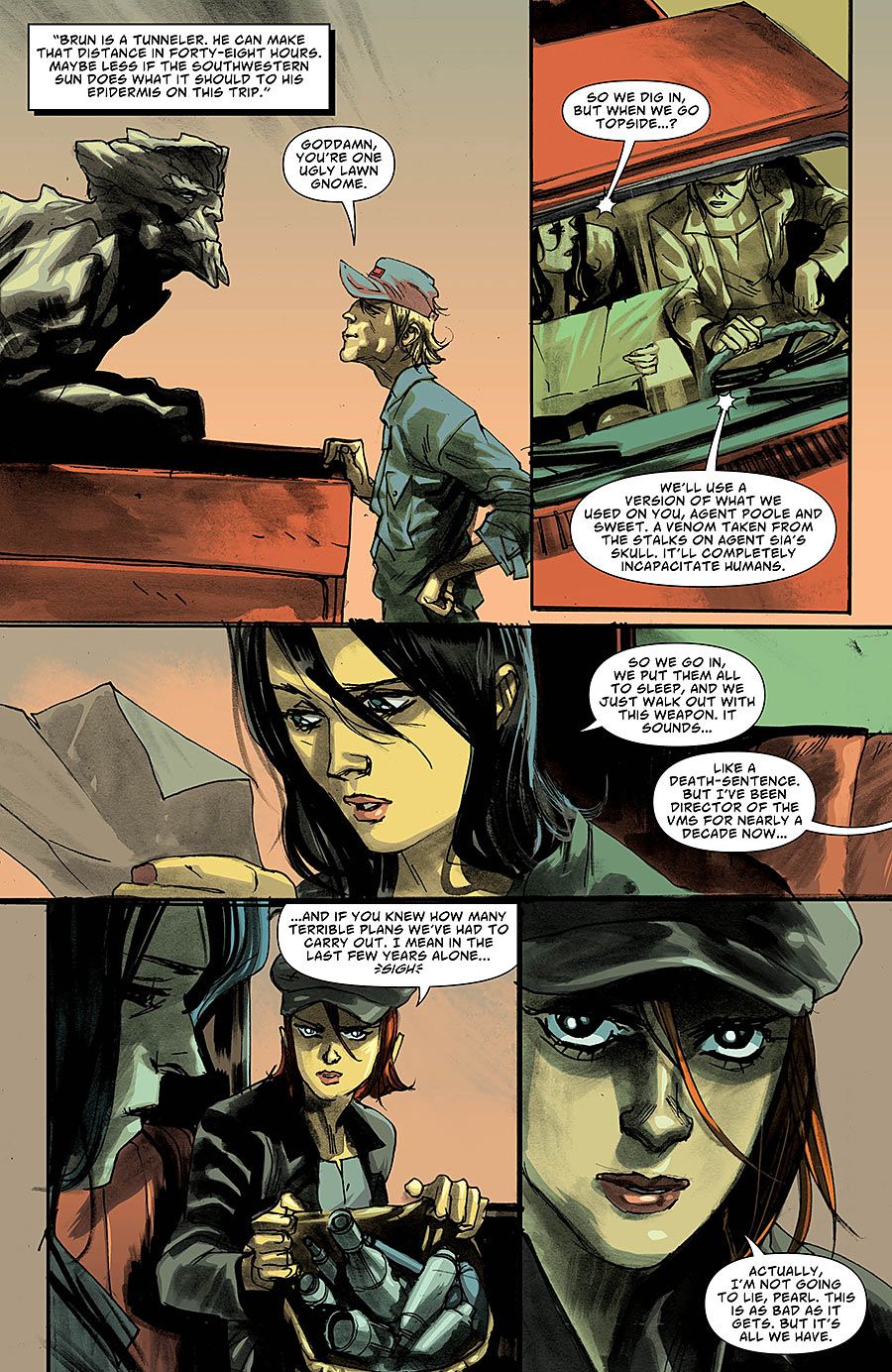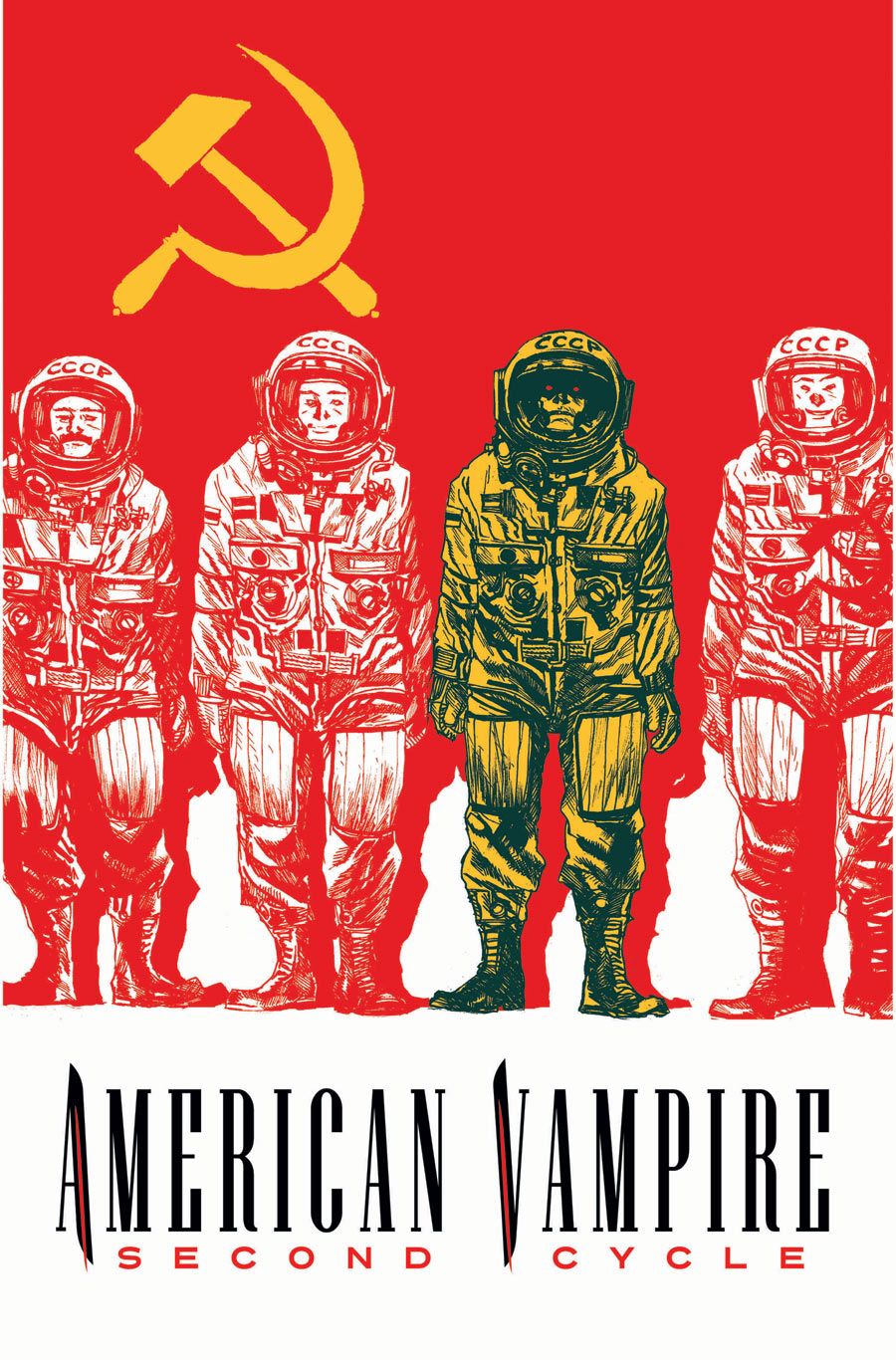SPOILER WARNING: The following interview discusses specific events and plot points from "American Vampire: Second Cycle" #7.
Scott Snyder and Rafael Albuquerque have unleashed some monstrous monstrosities in the pages of "American Vampire" since its debut in 2010. Skinner Sweet -- the Vertigo series' titular anti-hero -- makes Wolverine and Jonah Hex feel all warm and fuzzy while his nemesis Gray Trader, the original vampire, is as nasty as they come.
But neither comes close to what lurks beneath the surface of the Eisner Award-winning series. The Beast is coming and if its minions, the sixth breed, are any indication the 'centipede-demon,' as Snyder called it in his latest in-depth conversation with CBR News, it's going to be one for the ages.
Snyder Explains Why He's Launching "American Vampire" into Space
Inspired by American folklore and mythology, Snyder has infused his and Albuquerque's interpretation of Satan with an unhealthy (and unholy) dose of pseudo-science, creating a monster that spreads evil like an unfathomable infectious disease.
In this week's "American Vampire" #7 -- the seventh issue of the series' re-launched Second Cycle -- the Beast bests Skinner and now the final shred of his morality is gone. That's bad news for Calvin Poole and Agent Bixby -- and the space race is, apparently, now on hold.
Meanwhile, Pearl Jones, Felicia Book and the gargoyle Brun are heading to Area 51 and while they haven't arrived at the United States Air Force highly restricted facility yet, Snyder told CBR the nation's extraterrestrial secrets will soon be exposed.
CBR News: You and Rafael have delivered some intensely grotesque monsters in the pages of "American Vampire" over the years. Does it get any worse than the sixth breed?
Scott Snyder: Yeah, actually it does. [Laughs] We really want to ratchet it up arc by arc. And when you start to understand that there is a monster breeding underground -- that's our interpretation of the Beast. He's really grotesque and he has his own mythology. You start to learn about him in this arc and you'll learn a lot more about him moving forward. He's essentially, the first monster. He's the very first infection. He's the very darkest thing on Earth. The things that he spawns -- the sixth breed -- aren't the monsters that we know. They are monsters from a very different bloodline and a very different time. He is the complete epitome of darkness so we wanted the things that he makes to be grosser and more vicious with every arc that you see.
And when we finally see the Beast, that's the one that's going to keep us awake at night?
Definitely. [Laughs] We're holding him off for a while because the real scary thing is that he is down there in the Earth. You saw a glimpse of him. He's almost a worm-like, prehensile thing and it moves very quickly through the dirt and creates a burrow that people think of as Hell because when they get pulled down there and become part of his army, they lose part of their own autonomy. In our narrative, our world, it's what fuels Western mythology. The idea of demons down there, the heat, the mythology all has a scientific basis. It's a lot of fun to take all of the folktales and all of the myths and legends and create a pseudo-scientific reason for why they would exist.
While this is a novel approach to explain how the Devil and Hell may exist in the real world, basing your horror stories on science, or pseudo-science, is nothing new for you -- you also used this technique for "The Wake" in explaining mermaids. Did you study the physiology of worms and infectious disease in preparation for "American Vampire?"
We have a weird blend of the life of a virus and this whole bible that Rafa and I have of different myths and legends and folklore about the Devil and evil and the greatest embodiments of evil from different cultures. And we wanted to make something that felt like Tiamat and Satan and all of these kinds of things but it's not. It's something that spawned these things.
We did a lot of research when it came to cultural touchstones for figures of tremendous evil and destruction but with the science, it's the same science that we've had since the beginning. And that's this idea of infection and this idea of genealogy.
In the final pages of "American Vampire" #7, Sweet, already infected, transforms into a sixth breed. Sweet has been an anti-hero at best, and one of the baddest dudes in the history of comics at worst. With Sweet now one of Beast's parasites, are we about to see the absolute worst of Skinner Sweet?
This arc is really about this moment in history that fascinates both Rafa and I. It's a time when there is this sudden leap and tremendous progress both technologically with the space program and culturally with the civil rights movement across the country. It's a territory that is really brave and different from where it had been and yet there are these tremendous fears at the same time. There's violence. There's resistance to progress. And there is also the fear of nuclear annihilation with the Cold War hanging everybody all of the time. It's a really volatile time and I think it's a moment when people generally didn't know whether the forces of progress and good or the forces of fear and regression would win out.
For us, in this arc, Skinner is the battleground. Not to give too much away but the arc plays itself out with those types of forces in play. He is a character that is deeply rebellious and mischievous and evil, a lot of the time. He has points of good too but as somebody that is now infected, he is surely going downhill. He is going to be this mindless, evil thing that needs to be killed. But Pearl and Cal, the people that know him, I think, are less willing to completely confine him to that group. In a lot of ways, this arc is personal for me and Rafa. And it's about how violent and terrifying change can be and just how capable people are of change even when you think they are not because they are hopeless cases in some ways. Those are some of the underpinnings that we are working with in the series even though it's also geeky pool parties and centipede-demons and Area 51 and vampires in space.
Snyder Teases "Batman's" Future, "Wytches" Movie Developments, "American Vampire's" Return
Glad you mentioned Area 51, because there is a great line from Felicia in this issue as she, Pearl and Brun are en route to Nevada when she says, "It's a bitch isn't it?" And Pearl doesn't know what Felicia is talking about and she answers, "Optimism." You talked about the bravery of the civil rights movement and the challenges forthcoming for Felicia and Pearl and Skinner and Cal. How important is it to hold onto one's optimism when facing all of these 'terrible plans'?
For me, that's a theme that runs through a lot of my stuff. It's a major theme of 'Endgame' in "Batman," as well. A lot of things that keep me writing involve those very fears. Not only is it worth being optimistic in big ways as it relates to national progress or global progress or climate change but also in small, personal ways, as well. Who is to say that your life means anything or that it matters in the crushing indifference of the world? The characters that I love the most are the ones like Batman that say, "Go out and make your life matter." Even in the face of complete random violence, it shows that none of it matters when you look at what happened to his parents. It's almost an argument against doing what he does.
That said, characters like Pearl and Felicia and Calvin fight even when the odds are overwhelmingly against them -- all of the time. And not just from battle to battle but just in the whole weight of the battle in terms of the historical component of the series. This thing, when it comes out of the ground, there is no stopping it. There never has been. It killed things back in the day, which you'll learn soon, that are almost god-like figures. [Laughs] They are much more powerful than Felicia or Pearl or Skinner. Once, they learn what they are up against, in truth, they'll see that it seems pretty hopeless but again, that's why those are the characters that I adore. [Laughs] They have no reason to be hopeful or optimistic or even to be motivated to do what they do and they still do it because it's a way of spitting in the face of all of that indifference and looking at the void and laughing and saying, "Who cares?" They say, "We're going to try and make a difference in the life that we have even if it means nothing ultimately."
Will Pearl and Felicia actually make it inside Area 51 in the next issue? The solicitations tease that we might soon be seeing some "American Vampire"-style extraterrestrials?
Yep. Next issue. They get in there first thing. They tunnel in with Brun and then there are some big surprises when they get in there.
And are we going to get some vampires in space too?
[Laughs] I don't want to give too much away but yes, Skinner and Cal literally go up into space in a Gemini rocket. This arc is easily our craziest and most bombastic and out of control arc. And it's easily been the most fun to write and draw. And I think it's also one of the most intense arcs. And next issue, it's also very emotional. Cal has lost Skinner in certain ways and he begins to talk about what happened to his brother, which we saw many issues ago in an arc that dealt with the 1950s and doo-wop groups. He was in an integrated doo-wop group and he talks about what happened to him and why he is extremely pessimistic about a lot of things. And Skinner agrees with him.
It's a thrilling arc to be working on with Rafa because to me, it embodies everything that we love about the series. It's completely zany and completely over the top. And ridiculous in terms of everything that it draws in. There are mummies and gargoyles and vampires in space. It doesn't get crazier than that but it's anchored in real emotion and interest in this historical moment in time and its relevance to now.
"American Vampire: Second Cycle" #7 by Scott Snyder and Rafael Albuquerque is available now.

